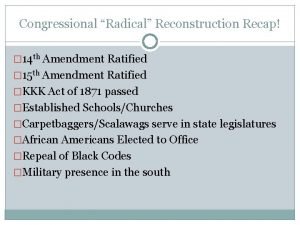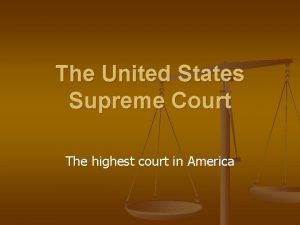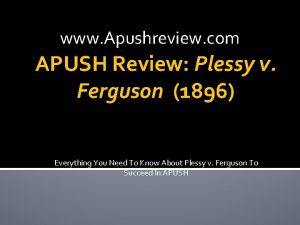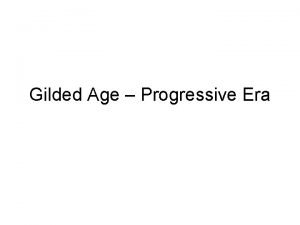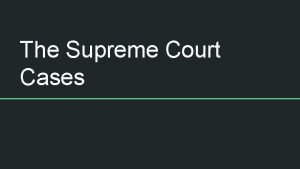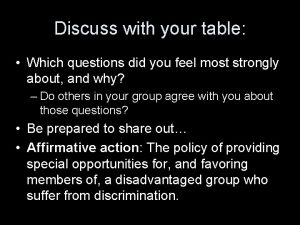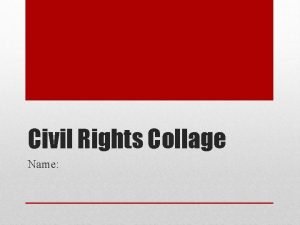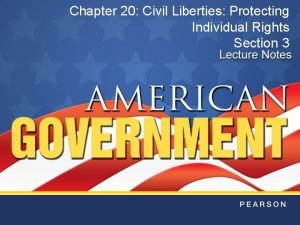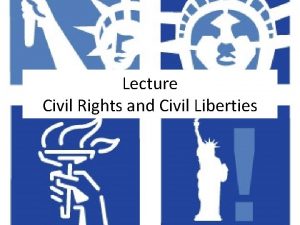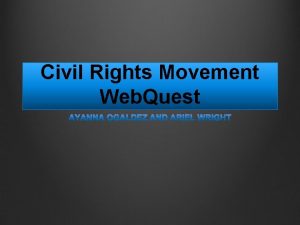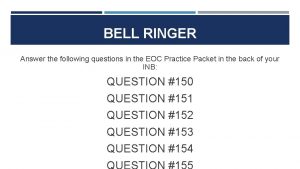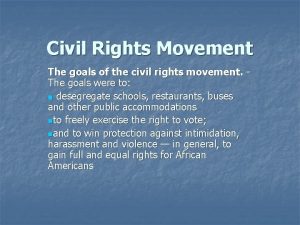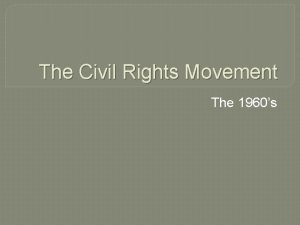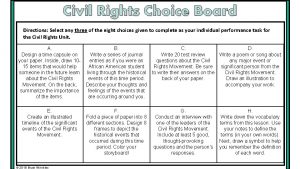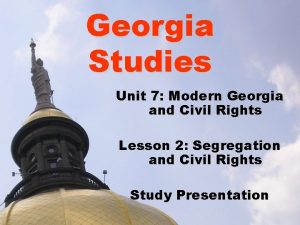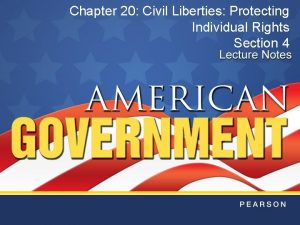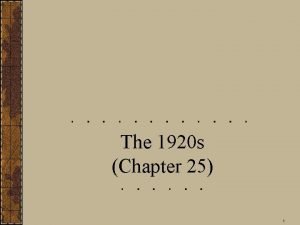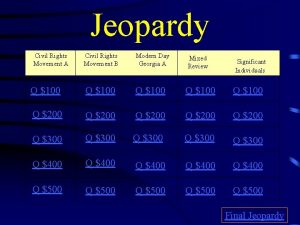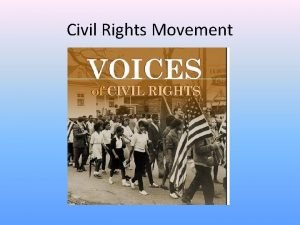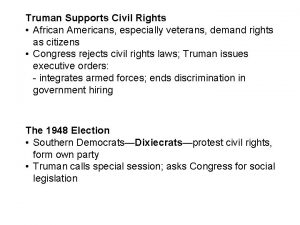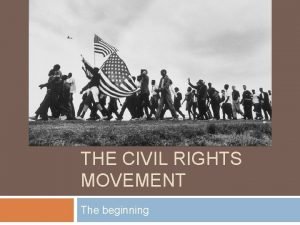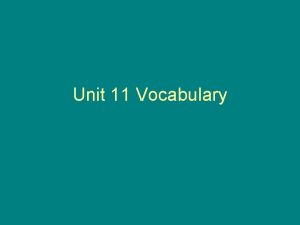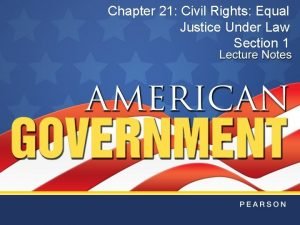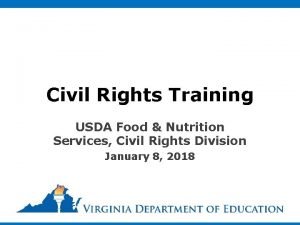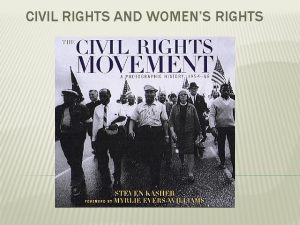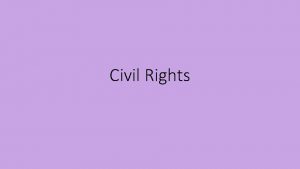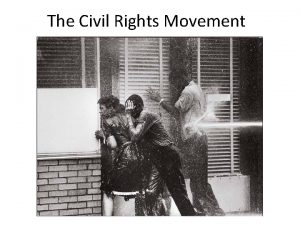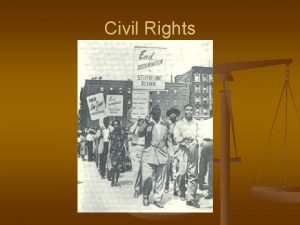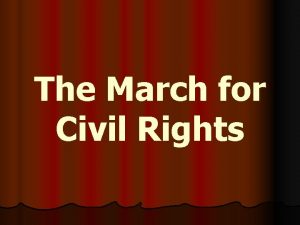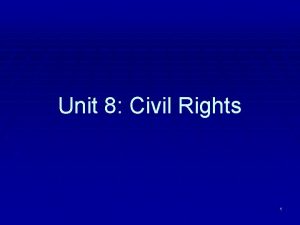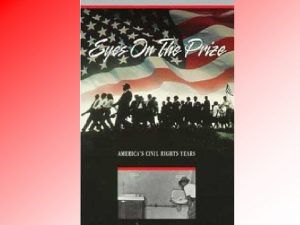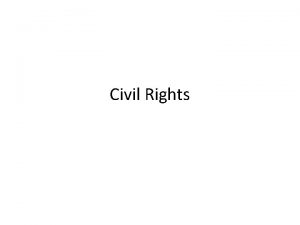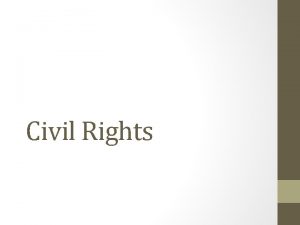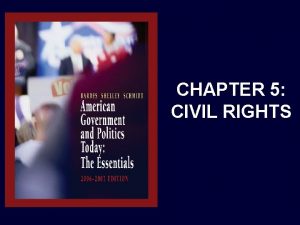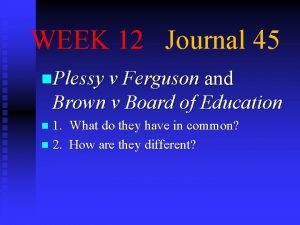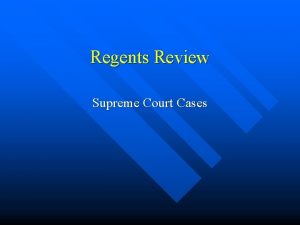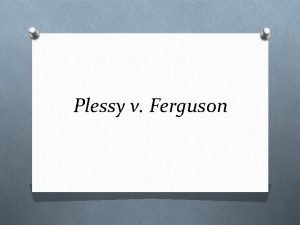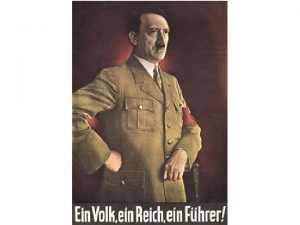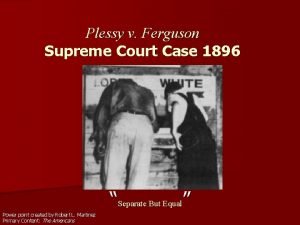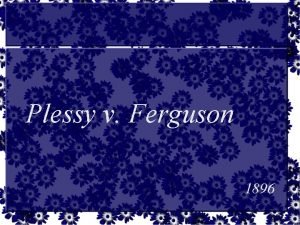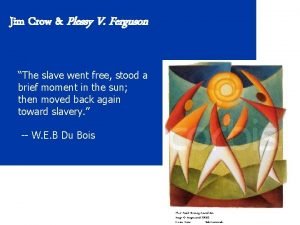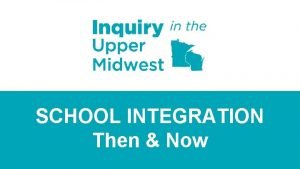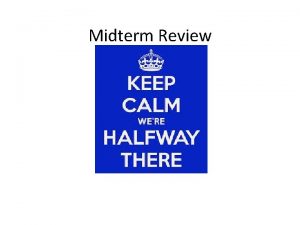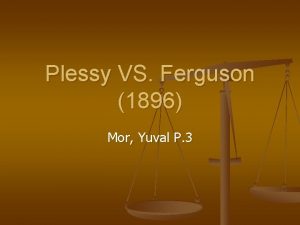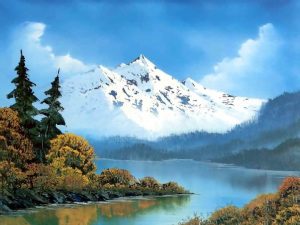Civil Rights Identify the Plessy v Ferguson decision

































- Slides: 33

Civil Rights

Identify the Plessy v. Ferguson decision? • “Separate but equal” facilities were constitutional • Racial segregation was legal

What precedent was set by Plessy v. Ferguson? • Southern states could segregate public facilities.

What was another term for segregation laws? • Jim Crow laws

For what does NAACP stand? • National Association for the Advancement of Colored People

For what 2 things did the NAACP work? • End legal segregation in the South • Gain the right to vote for African-Americans in the South

Who was an early leader of the NAACP? • W. E. B. Du. Bois

What Supreme Court decision set forth the “separate but equal” doctrine? • Plessy v. Ferguson

What was the 1954 Supreme Court decision in the Brown v. Board of Education case? • Supreme Court declared racial segregation in public schools unconstitutional

What was the constitutional basis of the Brown decision? • Racial segregation violated the Equal Protection Clause of the 14 th Amendment

What Supreme Court decision declared racial segregation in public schools unconstitutional? • Brown v. Board of Education of Topeka

Who served as chief counsel for the NAACP Legal Defense Fund at the time of the Brown decision? • Thurgood Marshall

Who was the most famous civil rights lawyer in Virginia? (He worked on the Prince Edward County school case. ) • Oliver Hill

Identify the Solid South. • Democratic Party control of Southern politics from late 19 th century to after World War II

Identify Massive Resistance. • Virginia’s attempt to avoid obeying the Brown desegregation decision

What Democratic U. S. senator led Virginia’s Massive Resistance movement? • Harry F. Byrd

What is the official name of the Virginia state legislature? • The Virginia General Assembly

What did the Brown decision show about the Supreme Court’s powers? • By interpreting its powers broadly, the Supreme Court could reshape American society

What event made Rosa Parks famous? • The Montgomery Bus Boycott

What was the goal of the 1963 March on Washington? • Gain passage of major civil rights laws by Congress

Who gave the “I have a dream” speech at the March on Washington? • Dr. Martin Luther King, Jr.

For what method of protest was Dr. King known? • Non-violent, mass protest

What president played a major role in the passage of the 1964 Civil Rights law and the 1965 Voting Rights Act? • Lyndon B. Johnson

Identify the 1964 Civil Rights Act? • Outlawed discrimination based on race, color, religion, gender, or national origin in public places and by employers • Gave the federal government more power to enforce all civil rights laws

Give four examples of public places covered by the 1964 Civil Rights Act. • Motels • Hotels • Restaurants • Parks

Did the 1964 Civil Rights Act desegregate public accommodations? • YES

Give three examples of public accommodations. • Hotels • Motels • Restaurants

What was a literacy test? • Person had to prove he could read and write in order to vote

Identify the 1965 Voting Rights Act. • Outlawed literacy tests as a voting requirement • Sent federal registrars to the South to register black voters

Why did the Southern states require literacy tests? • To keep African. Americans from voting

What did the 1968 Civil Rights Act do? Outlawed racial discrimination in the sale and rental of housing

What does one call the movement of whites from the city to the suburbs in order to avoid sending their children to integrated public schools? • White Flight

What kinds of schools did Southern whites establish to avoid racial integration of public schools? • Private academies
 What was the impact of plessy versus ferguson
What was the impact of plessy versus ferguson What is the highest court in the united states? *
What is the highest court in the united states? * Plessy v ferguson apush
Plessy v ferguson apush Ida tarbell
Ida tarbell George w. mclaurin
George w. mclaurin Plessy v ferguson summary
Plessy v ferguson summary Civil rights webquest
Civil rights webquest No decision snap decision responsible decision
No decision snap decision responsible decision Financial decision
Financial decision Civil rights leaders collage
Civil rights leaders collage Chapter 20 civil liberties protecting individual rights
Chapter 20 civil liberties protecting individual rights Civil rights movement essential questions
Civil rights movement essential questions Define civil rights
Define civil rights Civil rights movement webquest
Civil rights movement webquest Civil rights bell ringers
Civil rights bell ringers Goals of the civil rights movement
Goals of the civil rights movement Title vii of the civil rights act
Title vii of the civil rights act Civil rights sitins
Civil rights sitins Civil rights in child nutrition programs
Civil rights in child nutrition programs Lester maddox definition us history
Lester maddox definition us history Civil rights choice board
Civil rights choice board Unit 7: modern ga and civil rights
Unit 7: modern ga and civil rights Chapter 20 civil liberties protecting individual rights
Chapter 20 civil liberties protecting individual rights Chapter 14 postwar prosperity and civil rights
Chapter 14 postwar prosperity and civil rights Civil rights movement jeopardy
Civil rights movement jeopardy Civil rights movment
Civil rights movment Truman supports civil rights
Truman supports civil rights Civil rights in child nutrition programs
Civil rights in child nutrition programs The civil rights movement
The civil rights movement Rosa parks mother
Rosa parks mother Civil rights movement vocabulary
Civil rights movement vocabulary Chapter 21 civil rights equal justice under law
Chapter 21 civil rights equal justice under law Usda civil rights training
Usda civil rights training What did sncc accomplish and how
What did sncc accomplish and how
